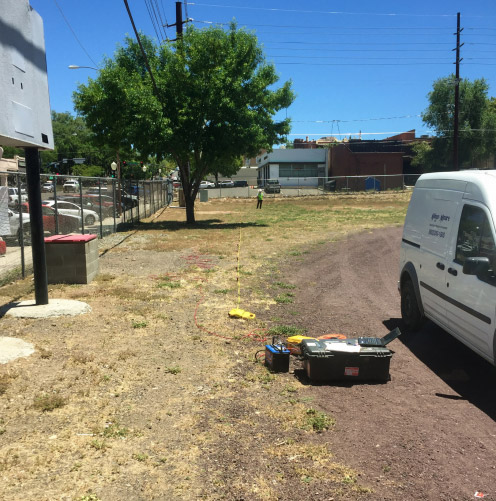Geophysics: Seismic Methods

Seismic Refraction Surveys
The seismic refraction method is based on the measurement of the travel time of compression (P-waves) both direct in the first layer, and refracted at the interfaces between subsequent underlying subsurface layers of differing velocities. Seismic energy is provided by an energy source located on the ground surface. Energy radiates out from the shot point, either traveling directly through the upper layer or traveling down to and then laterally along higher velocity layers before returning to the surface. This energy is detected on the surface using a linear array of geophones. Observation of the travel-times of the refracted signals provides information for the depth profile and velocity structure of the subsurface at the area surveyed.
Seismic Site Classification – Downhole and Crosshole
These methods are a variation of the seismic refraction and seismic shear wave methods employing a downhole triaxial geophone and a surface energy source or a downhole source. The energy propagates from the source to the downhole triaxial geophone and can be recorded as compression and/or shear waves.
This method provides detailed layer velocity information and the data can be used to evaluate the compression wave and shear wave velocities of the subsurface soils versus depth along with dynamic moduli. These values can be used to help calculate certain dynamic moduli for modeling the seismic response of a site for the purposes of a site-specific seismic site classification study or for estimation of dynamic seismic properties of a site.


